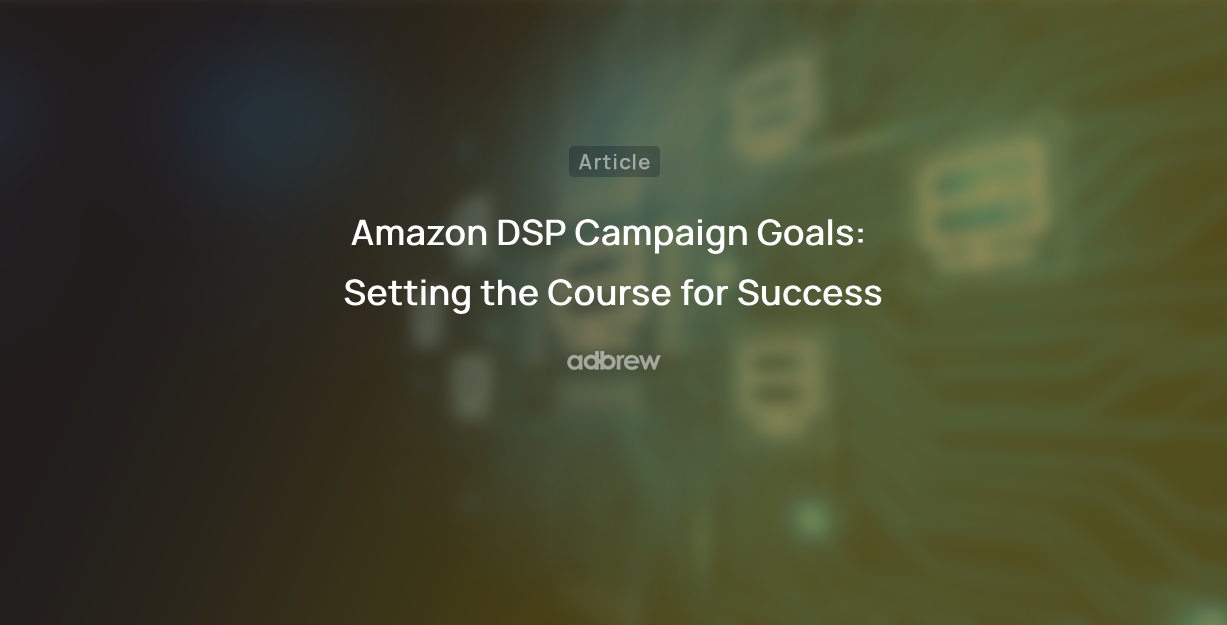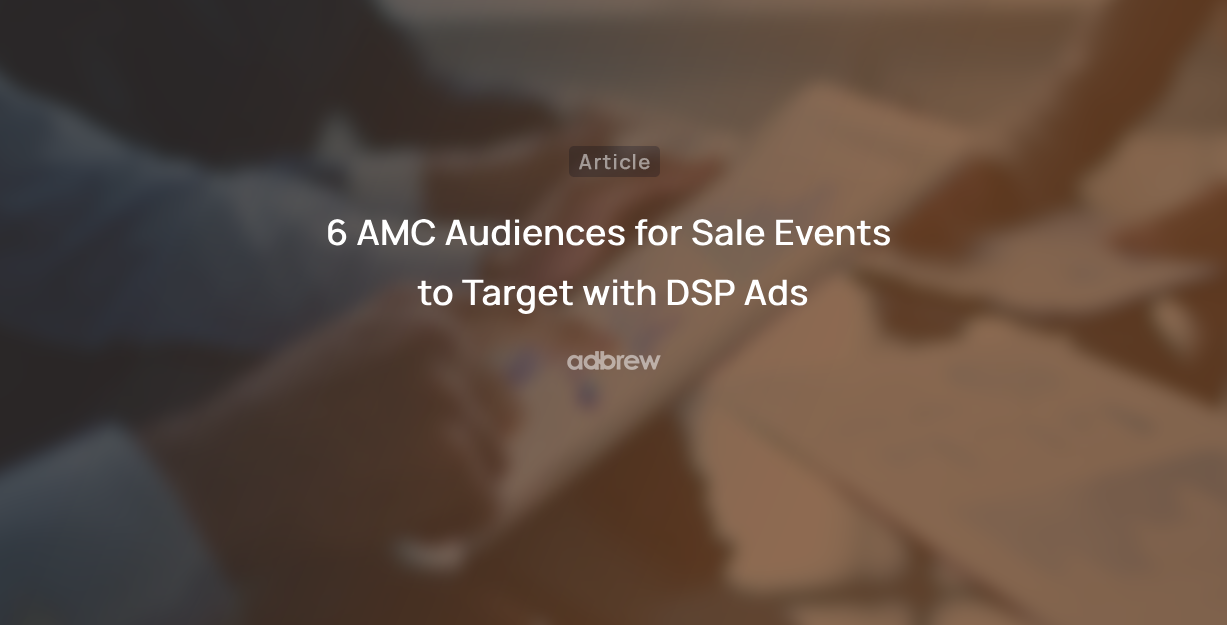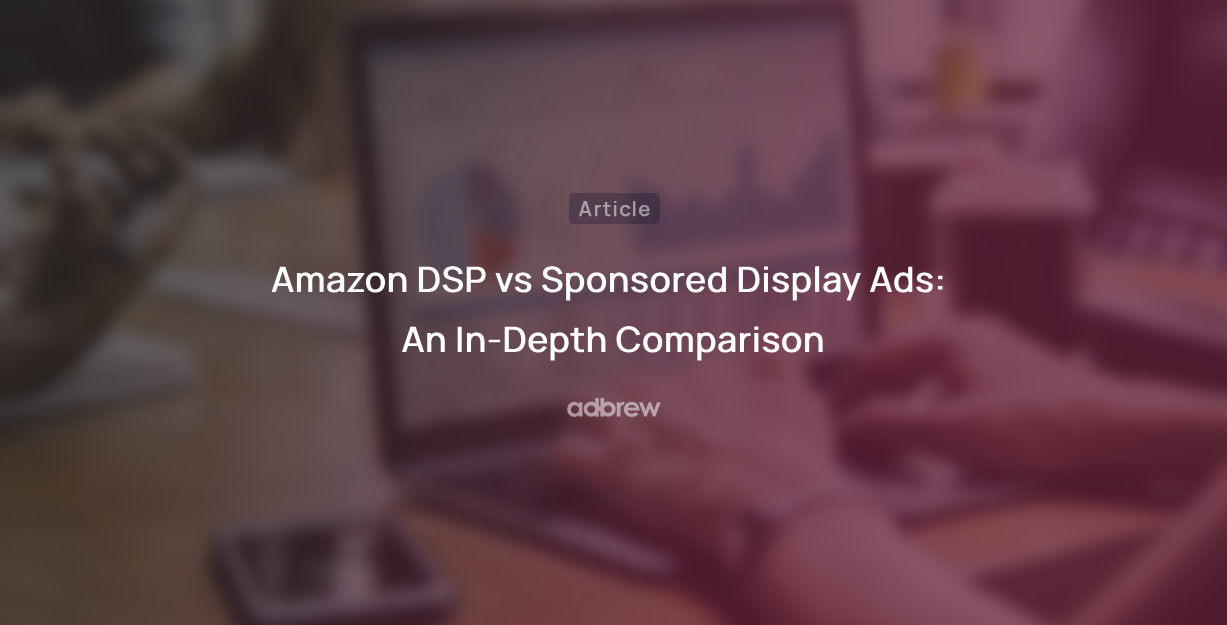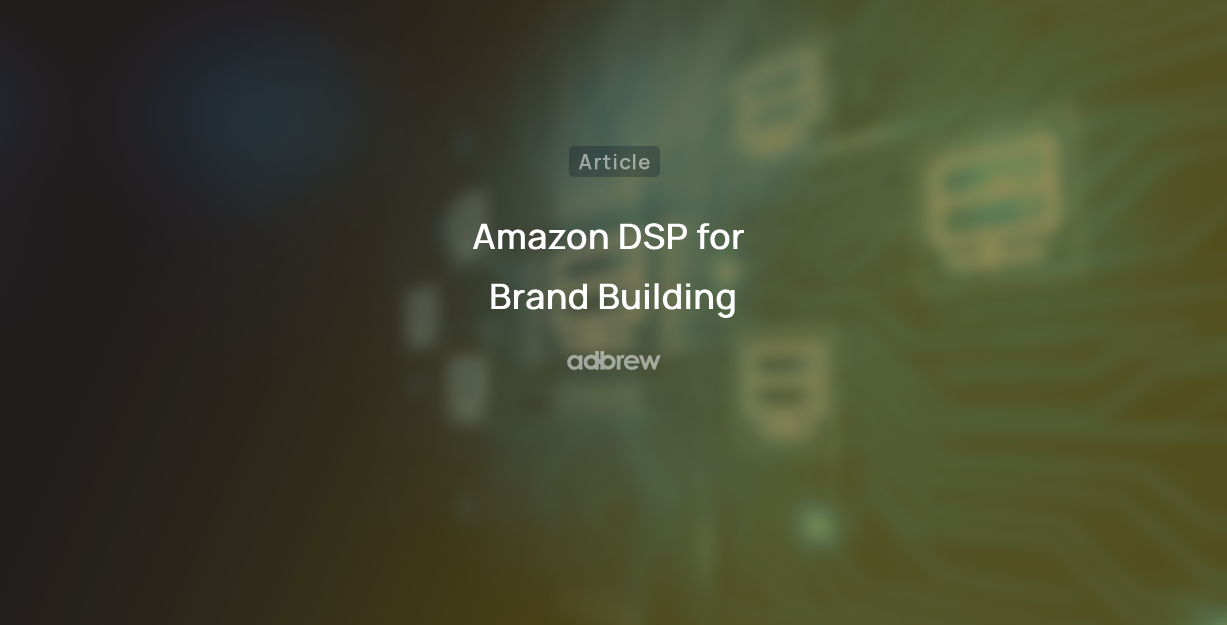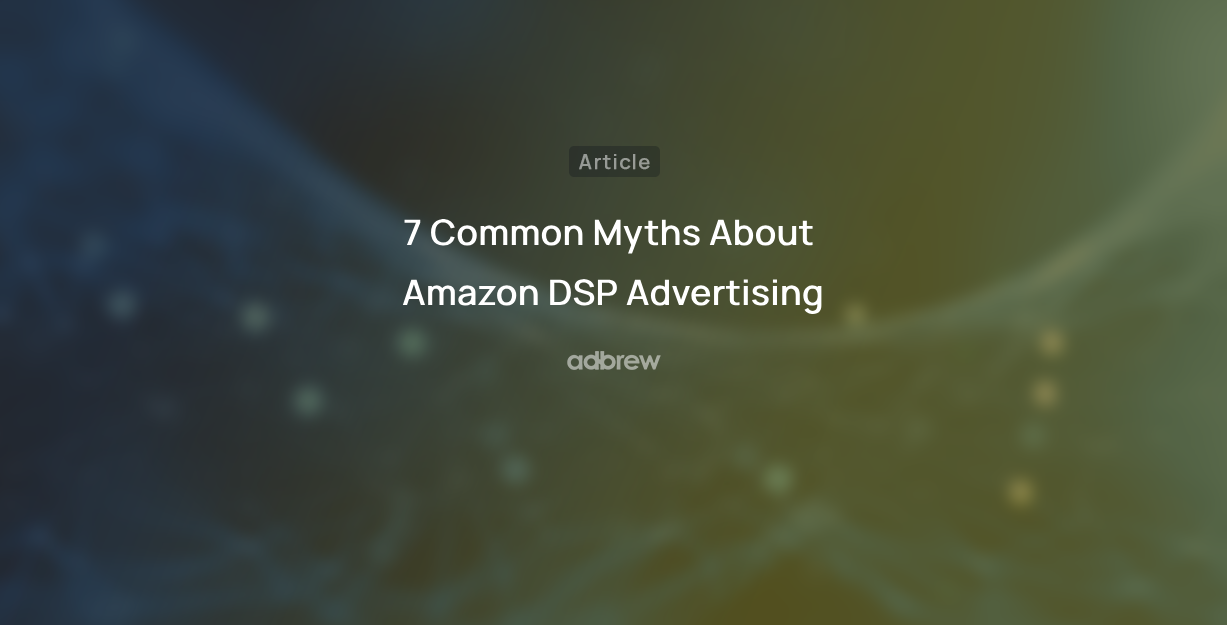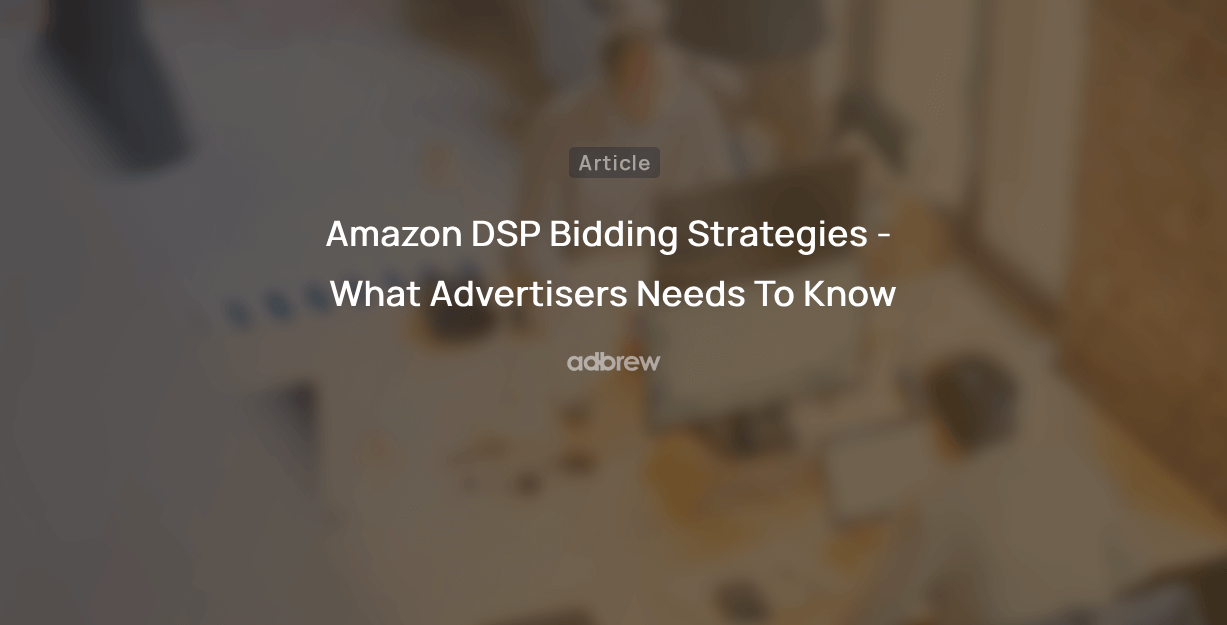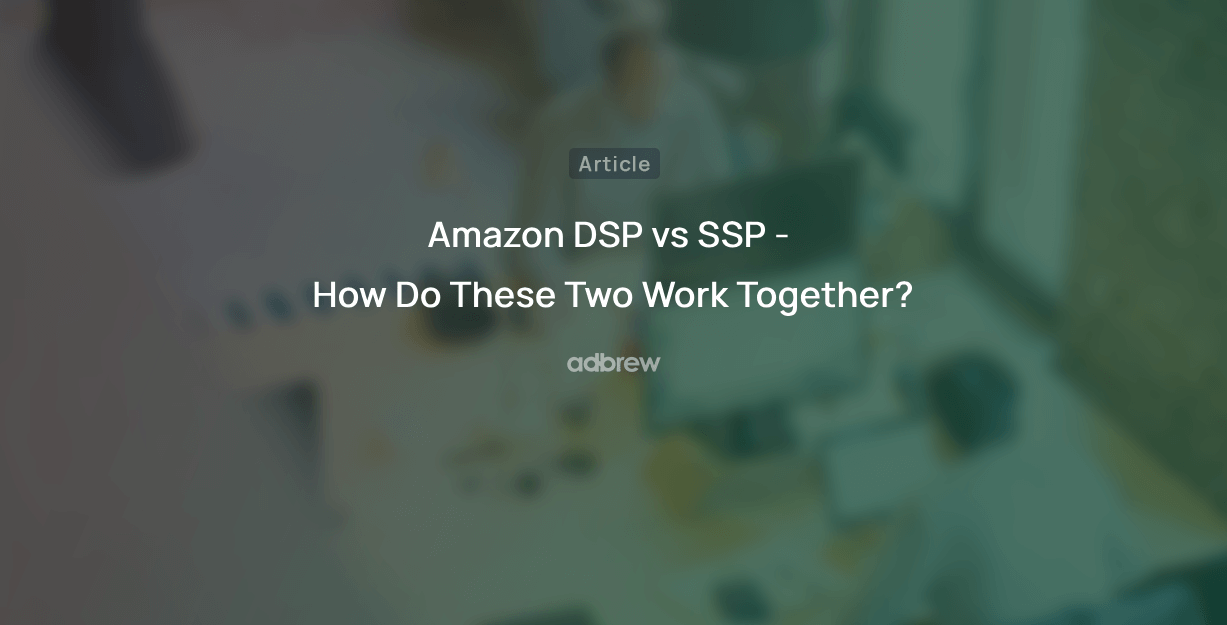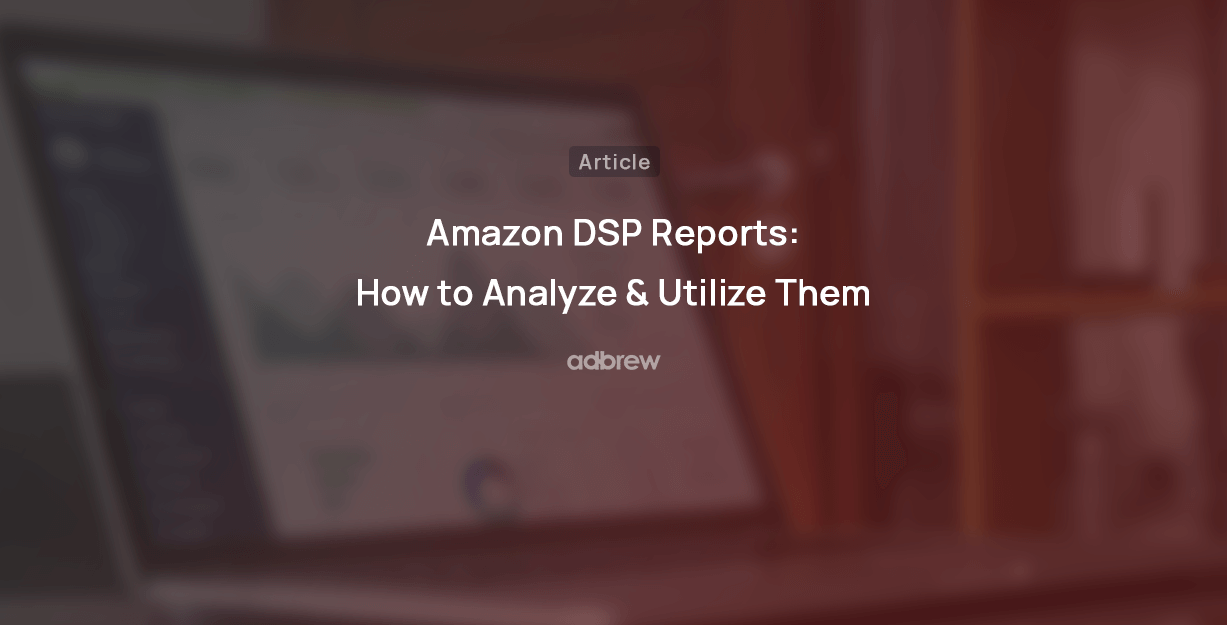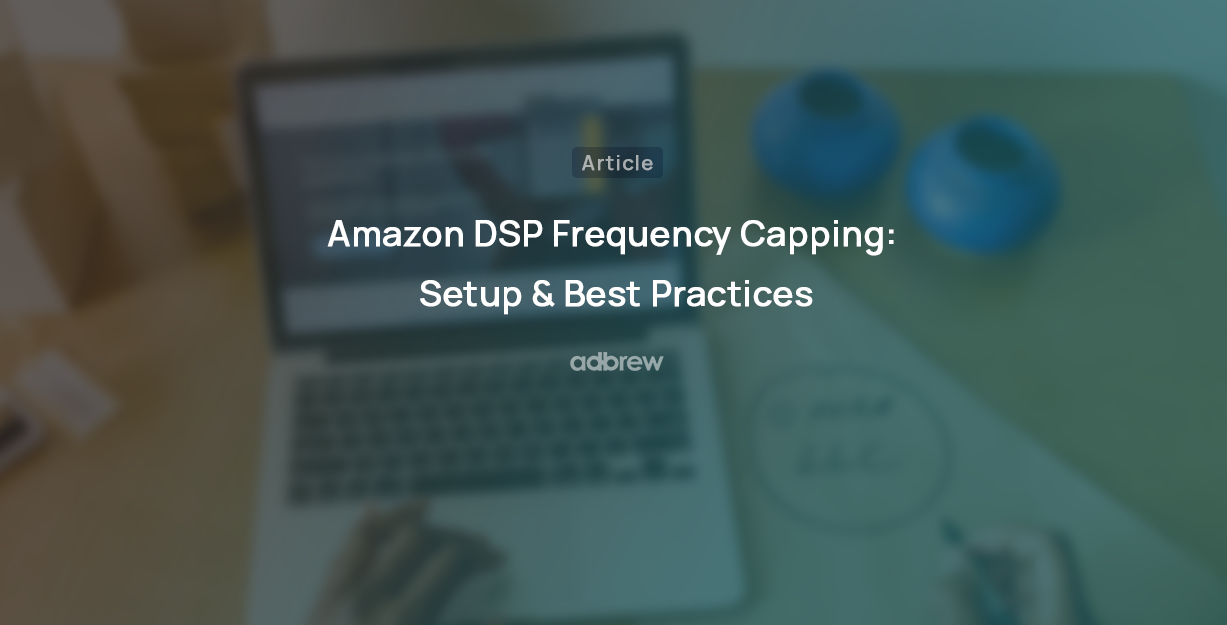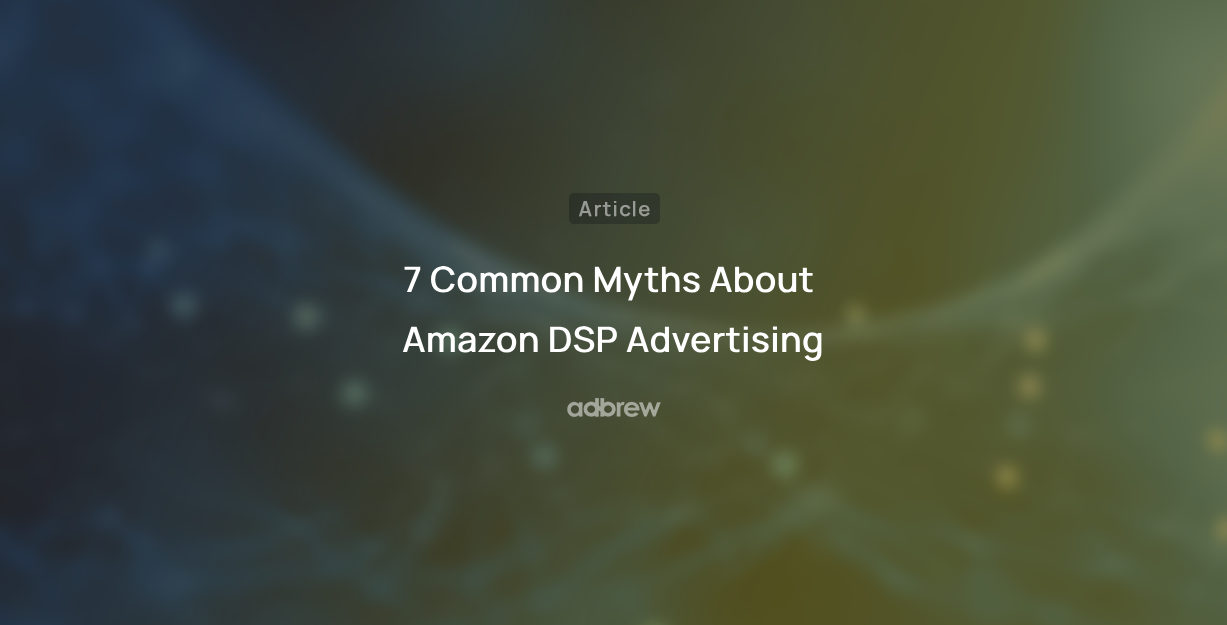
Amazon Demand Side Platform unlocks programmatic advertising across many channels in the vast Amazon ecosystem and beyond, but often gets shrouded in misconceptions.
As an Amazon DSP advertiser, these myths hold back countless small brands from maximizing their advertising potential.
In this blog, we’ll explore and debunk these myths surrounding Amazon DSP ads.
Myth #1: Amazon DSP is only for big brands with big budgets
While large enterprises leverage Amazon DSP’s capabilities, it is equally valuable for smaller brands. The platform’s minimum spend is flexible, and the ROI can be substantial. Remember, it’s about targeting the right audience, not just throwing money at the wall.
Amazon provides two types of DSP services:
- Amazon DSP Managed Services: This service requires a minimum investment of $50,000. With this option, Amazon takes charge of managing your DSP account, making it ideal for those lacking the resources and time to handle their accounts.
- Amazon DSP Self Services: Contrary to the misconception, there’s no minimum investment required for this option. You can collaborate with an agency like Adbrew, an Amazon DSP provider, which equips you with all the necessary resources to manage your account.
Therefore, it’s inaccurate to claim that Amazon DSP necessitates a reasonably sized upfront budget allocation of budget. With Amazon DSP self-service ads, you can start with as little as $100 a month.
Myth #2: You need to be an Amazon seller to use Amazon DSP
Even if you don’t sell on Amazon, you can leverage the platform’s audience-targeting capabilities to create audiences and reach potential customers across the web. You can drive brand awareness, and traffic to your website, or promote app downloads.
For example, if you are an insurance company selling vehicle insurance, with the help of Amazon DSP, you can target those who have recently bought a car or are shopping in car accessories categories, etc.
Myth #3: Amazon DSP takes credit for Organic and Sponsored Ads sales
Understandably, many brands new to Amazon DSP might see a shift in their sales landscape. If there is a decrease in Sponsored and Organic sales while DSP sales are increasing, the assumption may be that DSP is taking credit for sales from other channels.
While there may be some truth to this, it’s essential to address it by targeting and excluding the right audiences. By excluding audiences who have previously viewed your product detail page or made a purchase, you can refine your approach.
It’s important to remember that DSP excels at reaching new-to-brand audiences, so the increase in DSP sales often reflects the expansion of your customer base, not cannibalization.
You can also leverage Amazon Marketing Cloud capabilities to measure how different DSP and Sponsored Ad type overlaps with each other and help in driving conversion.
Myth #4: Amazon DSP is only for Upper Funnel Ads
While Amazon DSP is indeed effective for building brand awareness and reaching new audiences, its capabilities extend beyond these objectives.
In reality, DSP proves versatile in engaging consumers at different stages of the purchasing journey:
Upper funnel: By leveraging DSP, brands can target audiences based on demographic, device, lifestyle, behavior, and life events. Additionally, they can reach TV audiences via Amazon’s streaming TV ad campaigns and target customers across platforms, such as Fire TV and Twitch, offering targeted exposure at a lower cost compared to traditional TV advertising.
Middle funnel: DSP enables brands to identify and target potential customers actively looking for products similar to theirs so that they can increase their consideration for their products.
Bottom funnel: Leverage Amazon DSP retargeting capabilities. DSP allows brands to re-engage with customers who have interacted with their products, whether by visiting the page, adding items to the cart, or making a purchase.
To know more: Amazon DSP Full Funnel Advertising Strategy
Myth #5: It only drives sales on Amazon
Contrary to common belief, Amazon DSP isn’t limited to boosting sales within Amazon’s platform. It can effectively drive audiences to external websites and apps for desired actions.
By leveraging Amazon’s data and advertising capabilities, DSP extends a brand’s reach beyond Amazon, influencing consumer behavior across the digital landscape. It’s a versatile tool for enhancing brand visibility and engagement beyond the confines of Amazon’s marketplace.
Myth #6: It's just another display ad platform.
Think again! Amazon DSP offers unique advantages:
- Unmatched audience targeting: Go beyond basic demographics-based targeting. with purchase behavior, interests, and contextual targeting. Utilize purchase behavior, interests, and contextual targeting. Reach potential customers based on their Amazon activities, even on non-Amazon sites.
- Premium inventory: Access high-quality inventory across Amazon properties like IMDb, Twitch, and Fire tablets, as well as top third-party websites and apps.
- Advanced campaign management: Set granular bidding strategies, optimize campaigns in real-time, utilize frequency capping, and gain deep insights into campaign performance.
- Combined analysis with AMC: Utilize Amazon marketing cloud to get an in-depth understanding of how various DSP ads impact user purchasing decisions, in conjunction with Sponsored Products, Sponsored Brands, and Sponsored Display ads. This integrated approach provides a deeper understanding of the effectiveness of each advertising avenue in influencing consumer behavior and purchase choices.
Myth #7: It's no different than Sponsored display advertising.
One common misconception about Amazon DSP is that it’s no different from Sponsored Display ads. While both advertising methods aim to promote products on Amazon, they operate on distinct principles and offer unique benefits.
- Targeting Options: DSP allows advanced targeting with first-party and third-party data, while Sponsored Display relies mainly on Amazon’s customer data.
- Campaign Control: DSP provides greater control and customization, letting advertisers set objectives, budgets, and bidding strategies. It also offers more flexibility in creative design and ad formats compared to Sponsored Display.
- Investment: Notably, DSP usually requires a higher minimum monthly ad spend compared to Sponsored Display, which has a lower threshold.
- Reporting and Analytics: DSP reports offers more comprehensive tracking and analysis across various channels and platforms. In contrast, Sponsored Display provides basic performance metrics specific to Amazon advertising.
Ready to get started with Adbrew?
Use Adbrew's AMC dashboard to view new-to-brand metrics for all your sponsored and DSP campaigns with ease.
Final Thoughts
In conclusion, debunking these myths about Amazon DSP reveals its immense potential for advertisers across all scales. Whether you’re a small brand or a large enterprise, Amazon DSP provides sophisticated audience and targeting capabilities that can be harnessed to connect with potential customers.
Utilizing Amazon DSP allows advertisers to extend their influence beyond Amazon’s platform, directing traffic to their websites and engaging with customers throughout the entire purchasing journey. Amazon DSP is a powerful tool in the arsenal of modern advertising, offering unique advantages and opportunities to maximize the impact of Amazon ads.
Related Blogs
With the advent of Amazon Marketing Cloud (AMC), optimizing ad campaigns has become more versatile than ever. One notable feature […]
Amazon DSP, a Demand-Side Platform, allows advertisers to target audiences accurately using Amazon’s extensive shopper data. But before starting a […]
Amazon’s Demand-Side Platform (DSP) has become a game-changer for advertisers seeking to reach a massive audience of engaged shoppers. However, […]
Having spent considerable time working with Amazon DSP ads, we’ve observed a common challenge: achieving and measuring optimal results from […]
Are you a non-Amazon seller looking to tap into the power of Amazon’s advertising network? Amazon DSP, their Demand-Side Platform, […]
Sale events are all about reaching the right customers at the right time. But with so many promotions bombarding shoppers, […]
Amazon offers two different display advertising options for sellers: Sponsored Display ads and Amazon DSP ads. Selecting the right one […]
In today’s digital world, building a strong online brand is crucial for businesses of all sizes. While Amazon advertising solutions […]
Amazon Demand Side Platform unlocks programmatic advertising across many channels in the vast Amazon ecosystem and beyond, but often gets […]
Feeling trapped in the challenges of Amazon Sponsored Ads? Limited to engaging only with customers actively searching for your brand […]
If you are selling on Amazon, having a well-crafted remarketing strategy in place becomes crucial. Imagine re-engaging with potential customers […]
In digital advertising, Amazon DSP has emerged as a powerful tool for businesses to connect with their target audience and […]
Unlike Sponsored Ads, Amazon DSP offers the flexibility to run campaigns that guide users to either Amazon or non-Amazon destinations. […]
Whether you’re an advertiser seeking to connect with engaged shoppers worldwide or a publisher looking to monetize your ad inventory […]
Are you just starting with Amazon DSP (demand side platform) and feeling a bit lost in how to create Amazon DSP campaigns? We […]
Are you an e-commerce business owner looking for new and interesting methods to reach out to potential customers? Look no […]
We all utilize many different DSP ad types and targeting options available to advertisers in Amazon DSP. But how do […]
Amazon DSP (demand side platform) provides a multitude of targeting options, ranging from customer demographics, and behavioral targeting to contextual […]
Every advertiser wants their ads to reach a broad audience. However, showing an ad too many times to one person […]
With more and more shoppers turning to Amazon for online shopping, it is obvious why brands don’t want to limit […]


